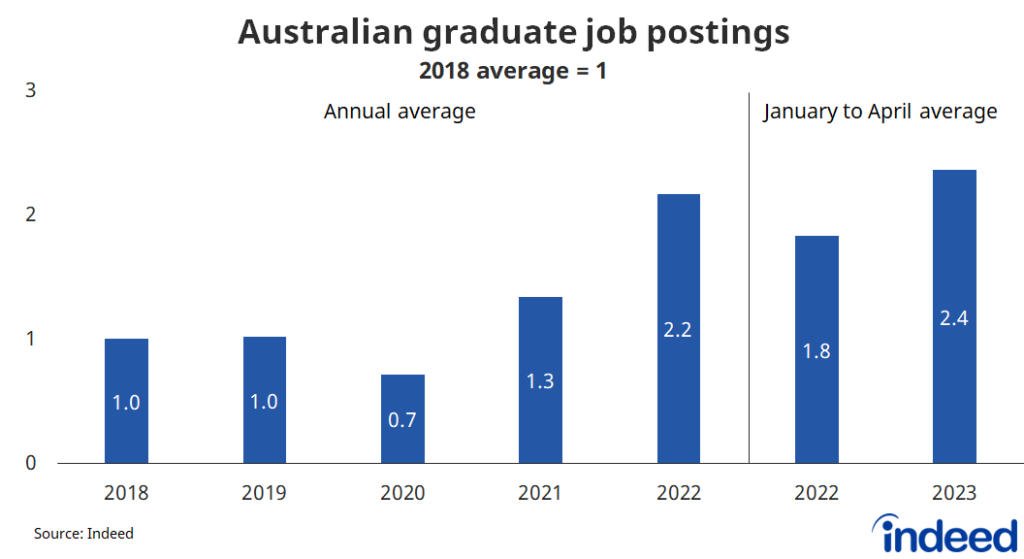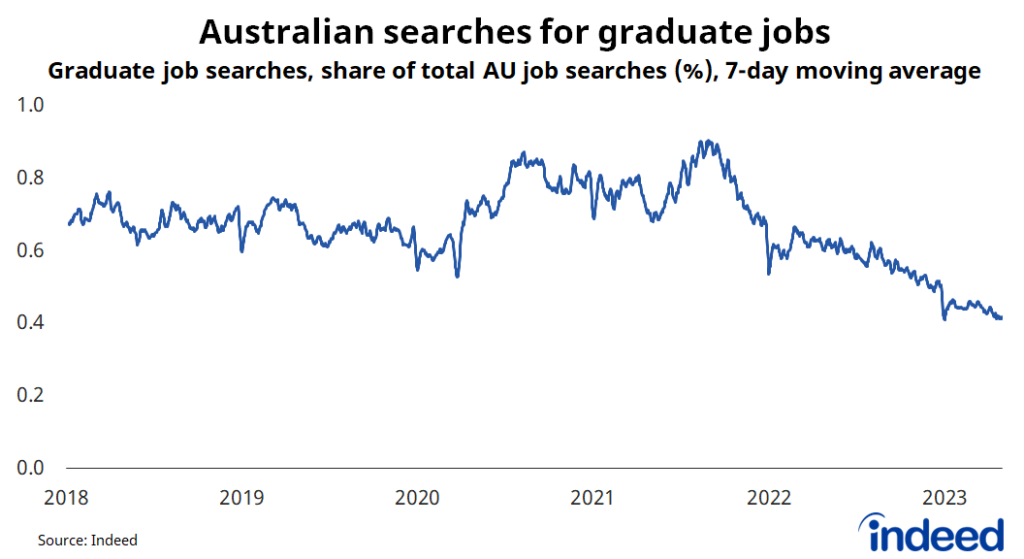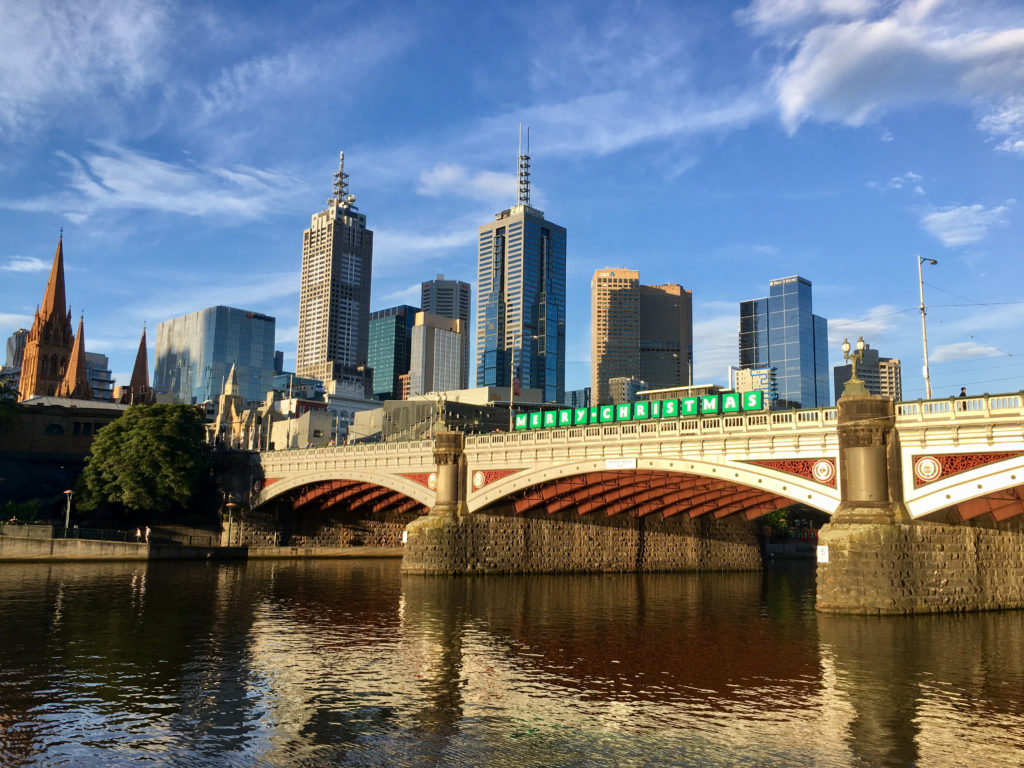Key Points
- Graduate job postings have increased sharply during the pandemic recovery. In 2022, there were 2.2 times as many graduate postings as there were in 2018.
- In response to strong demand for graduate talent, the share of recent graduates finding full-time employment within four months of graduating reached its highest level since 2009.
- Nevertheless, searches for graduate employment have declined throughout the pandemic recovery, perhaps reflecting the lack of available candidates or a wider range of employment options for recent graduates.
Australia’s graduate job market is currently red-hot, with more than double the number of job opportunities available in 2022 compared to 2018 and 2019. This year is expected to be even hotter, according to an analysis of Australian job postings on Indeed, with the level of graduate job postings from January to April tracking well ahead of last year’s rate over the same period.
For university students, the final year of study is often a difficult balancing act between school and applying for graduate employment. Some graduates lock-in a job early, waiting out the school year until their new career begins, while others face a hectic end-of-year scramble. Competition is typically fierce, not merely among employers, but also among graduates vying for the best positions.
In fact, competition for talent has become so intense that many employers changed their hiring patterns last year. While graduate recruitment traditionally peaks in March, 2022 defied this historical trend. After rising sharply in March, graduate postings remained high throughout the year — highlighting both the high demand for graduate talent and the difficulty many employers faced filling these roles.
Unfortunately for employers, the surge in graduate opportunities was not matched by jobseeker interest. As a share of total jobseeker searches, searches for graduate jobs declined steadily throughout 2022 and early 2023.
Demand for university graduates surged during the pandemic recovery
On average, there were 2.2 times as many graduate job postings in Australia each day in 2022 compared to both 2018 and 2019. The number of postings calling for graduates was 62% higher in 2022 than in 2021.
Demand for graduates is also showing no sign of slowing, even as labour demand overall starts to ease. From January to April of this year, graduate job postings were tracking 28% higher than the same period last year, defying the overall national decline in postings over the year.

Stronger demand for graduate talent has directly translated into improved employment outcomes for recent graduates. In 2022, 78.5% of undergraduates found a full-time job within four months of graduating, the highest level since 2009, according to the latest Graduate Outcomes Survey.
A shortage of suitable candidates may have forced some employers to compromise on qualifications or experience to fill graduate roles. Between 2012 and 2021, the full-time employment gap between undergraduates and postgraduates widened considerably, with employers demanding higher qualifications and/or greater experience from their new graduates. However, that trend partially reversed in 2022, with the full-time employment gap narrowing to its lowest level since 2012.
Quite simply, this isn’t the type of labour market where employers can choose to be picky — and recent Australian university graduates have benefited as a result.

Graduate hiring patterns changed in 2022
Interestingly, graduate hiring patterns changed last year, perhaps in response to widespread skill and talent shortages. Rather than peaking in March — as postings did from 2018 to 2021 — postings peaked much later in September, remaining elevated throughout the second half of the year.
It’s too early to determine whether graduate recruitment patterns this year will revert back to their 2018 – 2021 trend. It is notable, however, that graduate postings, as a share of total postings, peaked in March at its highest level in three years. This is a consequence of not only the rise in graduate job postings, but also the recent decline in Australian postings overall.

Graduate recruitment most prominent in engineering roles
In 2022, graduate postings accounted for around 6.5 percent of all civil, electrical and mechanical engineering roles (roughly one-in-sixteen engineering postings featured the word ‘graduate’ in their job title). A slightly smaller share (5.9%) of therapy postings reference graduates, while architecture (3.5%) and education (3%) also rank highly.
It’s important to note that not all graduate recruitment occurs online. For example, medicine graduates typically find recruitment via placements rather than online graduate programmes. In other occupations, official graduate programmes are rare and jobseekers with that specific qualification won’t find employment via that pathway.

Jobseekers are less likely to search for graduate jobs
Given the strong demand for graduate workers, you’d expect recent graduates to be keenly searching for these positions. That hasn’t been the case. In 2022, around 0.6% of Australian job searches were for graduate work, down from 0.8% a year earlier, with that share steadily declining throughout the year. Between January and April of this year, just 0.4% of searches were for graduate work.
This could reflect several factors:
- A lack of suitable jobseekers could lead to lower than normal search volume.
- A wealth of graduate opportunities may result in jobseekers finding employment faster than in the past, and therefore not needing to search as frequently.
- Greater opportunity and more options for job seekers relative to their peers even a few years ago might lead recent graduates to forego the traditional graduate programme and find employment elsewhere.

Unsurprisingly, Australia’s jobs recovery has proven beneficial to recent university graduates. But what might be more surprising is that this segment of the labour market continues to strengthen even as overall job postings ease nationally. There have never been more graduate opportunities available, with graduate employment outcomes reaching their highest level since the beginning of the global financial crisis. Graduate workers are better positioned to bargain for higher wages or benefits, and have considerable choice in where and how they work.
Methodology
To identify graduate job postings, we filter job posting titles for the word ‘graduate’. This identifies Australian employer graduate programmes and opportunities that primarily go to students completing their final year of university study.
Graduate-based job searches reflect job searches that mention ‘graduate’. This includes terms such as ‘graduate’ or ‘graduate programme’.
The data on employment outcomes for recent graduates is sourced from the annual Graduate Outcomes Survey.



